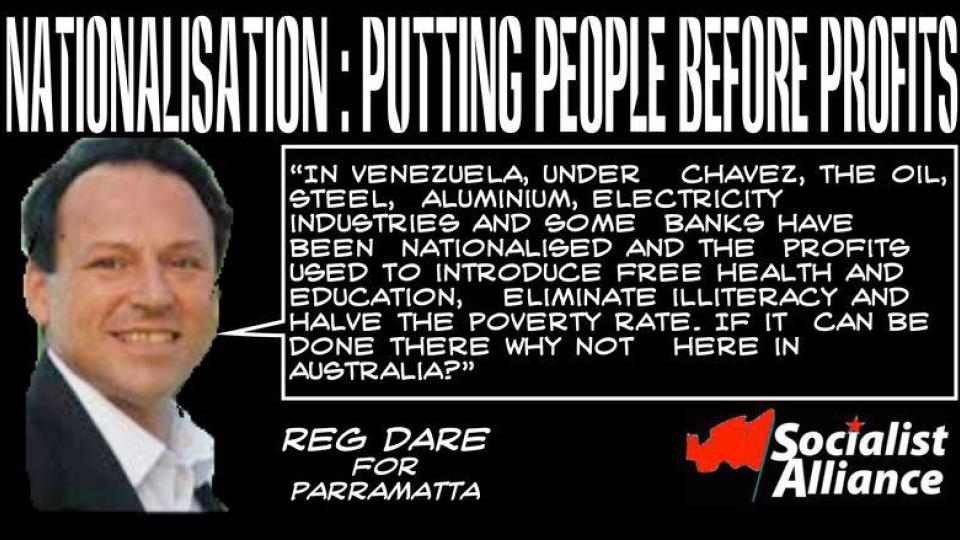Can nationalisation work?
Around the world, over the past 30 years or more, the ruling classes have launched an offensive against working people and the “welfare state,” under the theme of “Neoliberalism.”
Beginning in the US with Ronald Reagan and Britain with Margaret Thatcher, the neoliberal push was on for privatisation of public assets, cuts to social welfare, deregulation of markets and so on.
In Australia, this process began under the Hawke-Keating Labor government, and accelerated under Howard, continuing under the Rudd-Gillard ALP governments. It was also implemented by state governments led by both major parties over this period.
Despite this offensive, in some countries, a revolt has occurred to defend and extend public ownership and control.
In Latin America, Venezuela showed the way under the leadership of President Hugo Chavez from 1998. The Bolivarian Revolution led to the nationalisation, or re-nationalisation of previously privatised, industries.
These included banking, steel, aluminium, electricity and other key industries, and of course the crucial oil industry. In some cases, workers’ control experiments have commenced.
In Bolivia, under the leadership of President Evo Morales, vital mining and other resource industries have been placed in public hands.In other parts of Latin America, important industries such as oil, airlines and other sectors have been nationalised.
Even under capitalist governments, banks were effectively nationalised to save them from collapse during the global financial crisis. But instead retaining them in public hands, after a massive bail-out from the public purse, they have generally been handed back to the private sector.
However in Norway, a 78% super profit tax on the oil industry has taken back resources for the community, rather than merely a cash cow for big business.
